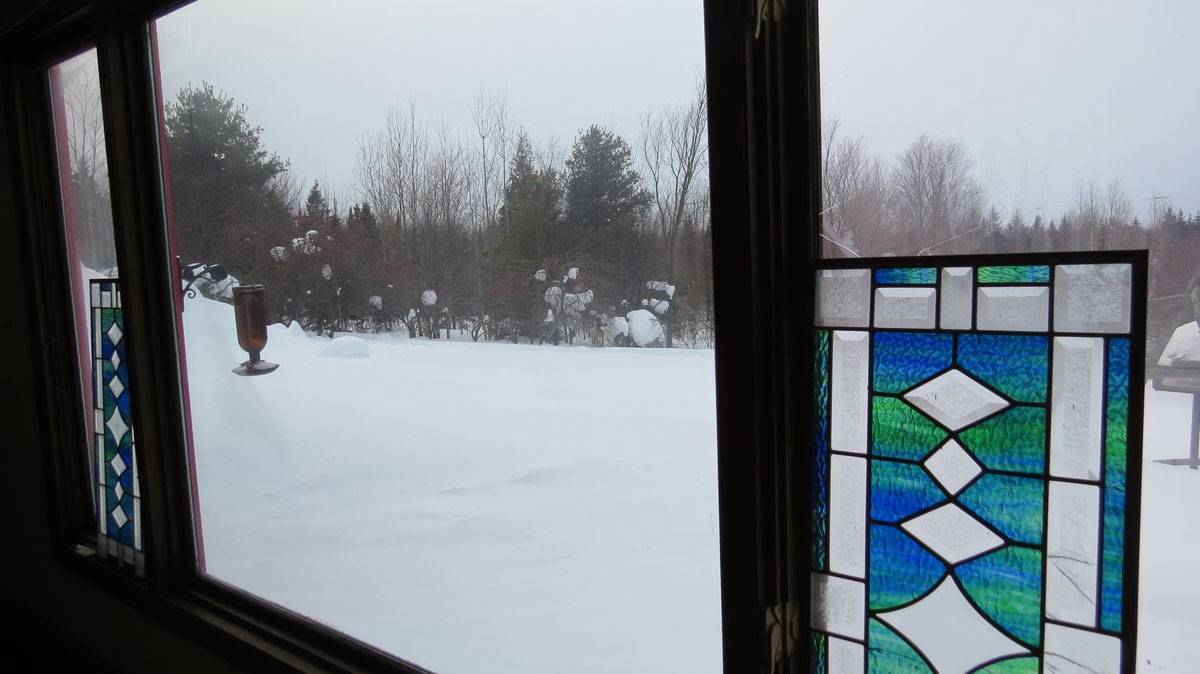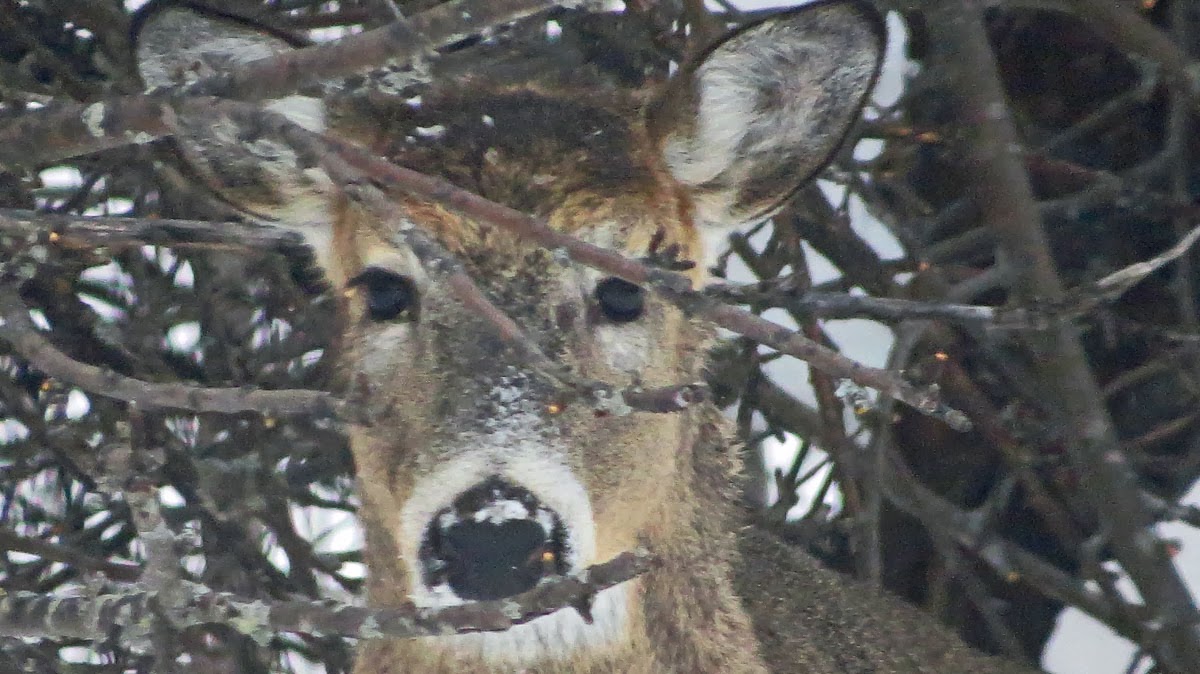Due to the cold winter, according to an analysis by NOAA's Great Lakes Environmental Research Laboratory, ice covered 88.4 percent of the Great Lakes on February 13. Not since early 1994 has ice been so widespread on the Great Lakes. This is an abrupt turn around from the past four winters, during which the peak ice coverage remained around 40 percent or less. A NASA satelite took the picture shown below of the Great Lakes on February 19th showing only around 80 percent ice coverage, which was less than the previous week. The south wind consolidated and crunched the ice, so along the south shore of Lake Superior there was some open water. On Lake Michigan, the ice was also consolidated and pushed to the north end. Lakes Huron and Erie are completely frozen in the picture. The incredibly cold weather this week, which is supposed to extend into next week, will most likely freeze over the little bit of open water that is left.
Then, while I was looking for more NASA photos to include in this post, I found a NASA web page that explains how NASA figured out what makes the Northern Lights shimmer and move. I have always wondered what causes the Northern Lights to suddenly brighten and dance in intriguing bursts of color. To find out, NASA launched a fleet of five satellites called THEMIS, the Time History of Events and Macroscale Interactions during Substorms. These satellites worked in concert with ground-based observers to measure the magnetic field at the same time that Northern Lights were active. What they figured out is that as the Earth's magnetic field captures and stores energy from the solar wind, the Earth's magnetic field lines stretch far out into space. As the amount of energy builds up, there is a release of the energy stored within these stretched magnetic field lines, flinging charged particles back toward the Earth's atmosphere, This Northern Lights impacting phenomenon is demonstrated in the NASA video shown below.
These observations confirm for the first time that magnetic reconnection triggers the onset of electrical substorms. Just after the energy snaps back toward Earth, there is a rapid auroral brightening and rapid expansion of the aurora toward the poles. This culminates in a redistribution of the electrical currents flowing in space around Earth. Northern Lights are shown in the NASA photo below.
Next I checked in with the Hubbel telescope. I decided to include an awesome photo of a spiral galaxy, M83, which is unveiled in all of its glory in the Hubble Space Telescope mosaic image below. The vibrant magentas and blues reveal the galaxy is ablaze with star formation. The galaxy, also known as the Southern Pinwheel, lies 15 million light-years away in the constellation Hydra.
Next I looked in on the Mars Curiosity Rover. On February 27th, NASA released the photo below showing sedimentary layers of rock in the foreground, and Mount Sharp in the background.
CITES:
http://eoimages.gsfc.nasa.gov/images/imagerecords/83000/83169/GreatLakes_amo_2014050_lrg.jpg
http://www.nasa.gov/mission_pages/themis/auroras/themis_power.html#.Uw_3QIV7Et4
NASA/Goddard Space Flight Center Conceptual Image Lab
http://hubblesite.org/newscenter/archive/releases/2014/04/image/a/
http://mars.jpl.nasa.gov/msl/news/whatsnew/
http://www.weather.com/news/weather-winter/great-lakes-ice-cover-largest-century-20140207

























































